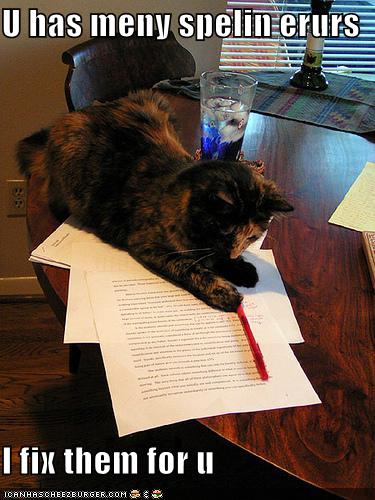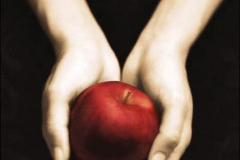Th. said:
Tell me more.
Okay, this is the rundown of ebook devices and formats as I understand them. The news changes from day to day (though I try to keep on top of it), and some of what I might pass along is probably no more than hearsay (I’ll mark that part), but I do think the hearsay is important to the overall discussion. All of these readers have down sides (naturally), most of which I don’t know, but I’ll try to include them if I do.

First, I have an eBookWise-1150, which I adore. It uses the native IMP format. This is why I like it:
- It’s inexpensive. At $110 (plus shipping) for the stripped-down memory model, it’s what I consider the gateway drug to ebook readers. IOW, if you have enough interest, it’s not so much you can’t experiment if you’re a first-timer or just unsure.
- It’s ergonomically designed for one-handed reading. You have 2 buttons you can click with your thumb for page forward and page back. You can use it left- or right-handed. I can lie down and snuggle under covers in bed (or even under the covers–remember reading with a flashlight?) and hold it with one hand.
- It’s backlit. You can read in the dark. My husband loves that.
- If you get the eBookWise librarian, you can convert almost any document to the IMP format.
- It comes with a stylus so you can mark, write, highlight, and search.
- You can change font size, but there are only 2 sizes.
- It can play audiobooks, but I don’t know if it can play mp3s because I haven’t tried and I’m not that interested.
- It holds a good charge. Lots of reading time for not a lot of charge time.
- It can display .jpg files.
This is what I wish it could do:
- Read EPUB. I really, really, really want to see everything go into the EPUB format, as that’s what’s being worked on as the mp3 format of language and pictures.
- You can get books from eBookWise/Fictionwise bookstores (and direct from epublishers), but I wish the eBookWise could download on the go a la the Kindle, as long as you’re in a hotspot.
- It’s an LED screen, which is hard on some people’s eyes, especially after looking at a computer all day, but I don’t find this to be an issue for me.
- I wish conversion from one format to IMP weren’t so tedious and time consuming. In other words, you have to be a little more savvy than your average user to get files other than IMP onto your reader.
This is how it’s affected my reading/buying:
- I spend a lot more money on books now because of the instant gratification effect.
 Second, I would love to have a Sony ebook reader, except for one thing: It’s not backlit. They do have a clever little device for it now, a plastic screen that opens and closes like a door and lights it from the top.
Second, I would love to have a Sony ebook reader, except for one thing: It’s not backlit. They do have a clever little device for it now, a plastic screen that opens and closes like a door and lights it from the top.
- It uses eInk technology, which is apparently better for your eyeballs.
- Sony’s latest release is touted to be able read EPUB format, along with PDFs (although I hear that’s not so good, really), its native BBeB, LRF, Word files, and mp3 files.
- You can find it in stores (Target! Score!) and look at it, touch it, see how it is. If they could get it into Wal-Mart, that’d be a coup d’etat. This also means it’s returnable if you don’t like it.
- It’s light and apparently well designed ergonomically.
This is what makes me hesitate to buy it:
- It’s not backlit. Again, this seems to be a love/hate feature. However, as stated, they do have a little add-on device to enable you to read in the dark.
- I believe (though I do not know) that conversion from one format to another is tedious and time consuming. See notation above on this topic, which, really, is a big beef for all the devices out there.
- At $300, it’s about $200 more than I want to pay.
- I do not believe they have a download-on-the-go the way Kindle does but I do think I heard they were working on it.

Kindle runs the AZW format, which is DRM’d Mobipocket, which also goes by the PRC/MOBI extensions, which I would not touch with a 10-foot pole and this is why:
- Amazon can lock up your purchases so you can’t read them anymore. In effect, you are renting the books, not buying them. They have a track record of doing this, so be careful.
- There is some speculation that they’re taking a loss on their ebooks so that the Gospel of Kindle can spread more easily, then they plan to raise the prices (remember, lease prices, not buy prices) once it can justify doing so. This is complete hearsay because Amazon won’t release good data on sales of either Kindles or ebooks. However, I don’t doubt that they could and would, because, well, Wal-Mart set the precedent, didn’t they?
- It’s also way too expensive for what you get.
- I have heard that it’s ugly and clunky to hold.
- Price: $359.00 Owwie.
- Proprietary format and DRM (digital rights management, which is a cardinal sin), which ties in with how they can shut your books off.
The only thing that sets this apart from the others is being able to purchase (rent) and download from wherever you are via “whispernet.” And I’ll tell you, from what I’m reading, that’s the draw, right there. If Sony got that, I think they’d win that skirmish.
Palm/Blackberry, by which I am also tempted. This uses the eReader (PDB) format. I mean, really, all-in-one capability for your life in the palm of your hand? Lists, phone numbers, books, music, phone, internet, email, instant messaging. What’s not to love? Erm, the really really small screen, that’s what.
iPhone/iPod Touch. This one’s tricky, because while I’m attracted to the possibilities here, I’m REPULSED by the fact that Apple isn’t getting into the ebook scene. I’ve referenced it before, but this burns my ass: “It doesn’t matter how good or bad the product is, the fact is that people don’t read anymore … The whole conception is flawed at the top because people don’t read anymore.” (Steve Jobs said that. Bastid.) This means, no iBook store. If Apple built a reader, I am convinced it would take over. So why don’t they? No idea.
So with this device, what we see now is that ebooks are being sold, but as applications (like games), not as text. I’m not sure how this works yet, really, but I do know there are a couple of vendors out there converting ebooks to apps for the iPhone, which can be downloaded on the go, a la Kindle.
 There’s another little device on the market right now that might get a little toehold, but I think it’s too early to tell: The ASUS Eee PC, which operates on Linux and a solid-state hard drive. More about this at Dear Author, as this is one of the few places I’ve seen with a decent breakdown. This, I am also interested in. The price tag ($299-499) doesn’t bother me on this because it’s a computer that can read ebooks and this price is comparable to the Kindle and Sony readers, which don’t do any more than that.
There’s another little device on the market right now that might get a little toehold, but I think it’s too early to tell: The ASUS Eee PC, which operates on Linux and a solid-state hard drive. More about this at Dear Author, as this is one of the few places I’ve seen with a decent breakdown. This, I am also interested in. The price tag ($299-499) doesn’t bother me on this because it’s a computer that can read ebooks and this price is comparable to the Kindle and Sony readers, which don’t do any more than that.
Choices! Ahhhh!
These are a couple of other ebook devices I hear bandied about once in a while, but am not really interested in learning:
RfP referenced the iRex iLiad by iRex Technologies. This uses eInk technology that Kindle and Sony do, but this is HEHEHEHEHELLLLAAAAAA expensive. It supports PDF, HTML, and MOBI/PRC.
Cybook (eInk). This supports all the major ebook formats.
And there are more here at the MobileRead Wiki (great resource), but I think I’ve covered the major players.
Right now, B10 Mediaworx will for sure offer The Proviso in the following formats:
HTML (any ol’ browser and most versatile for conversion to other formats)
IMP (eBookWise, ’cause … I got one-a doze)
LIT (Microsoft’s reader, which is what I buy when I want to buy a DRM’d book because I have a nifty little program that will break the encryption)
LRF (Sony)
MOBI/PRC (Kindle or any PC with the free reader installed)
PDB (Palm and Palm-type devices)
PDF (because, well…it’s there and we have to do the print version in PDF anyway, so why not?)
Of course, we’ll put it on Amazon in print and for the Kindle (glorified MOBI/PRC).
We’re also in the process of researching its conversion to an iPhone application and put in the iTunes application store. AND we plan to get it converted to EPUB format as soon as we can. Can’t promise anything on those front, yet.
I come at writing from genre romance. Its redheaded stepchild, erotic romance, can’t claim to be the leader in the ebook race because Baen (science fiction/fantasy folks) got there first. But romance is a close second and I would hope that others get on the bandwagon, particularly LDS publishers.
I needed to buy something from Deseret Book (that’s yet ANOTHER rant about marking your stupid series on the cover and what’s a sequel to what because you burned me AGAIN) and I really had to think about whether I wanted to purchase those books because they weren’t in digital format.
I was fortunate enough to get an electronic ARC of Angel Falling Softly from Zarahemla, but even then, I inferred that Eugene did his own conversion to Kindle (because he posted a primer on his site, albeit with regard to Path of Dreams). I hope that Zarahemla can see its way to digitizing its backlist and be a leaders amongst LDS publishers.
Let me repeat: I spend a lot more money on books now that I have an ebook reader and can get it instantly than I ever did with paper books, which require gas and/or a lot of time and/or a lot more money and/or a lot more effort than the electronic version. Publishers, do you get that?
I SPEND A LOT MORE MONEY ON BOOKS NOW.
Say that until you start dreaming it in marquee form.
 Peter May’s House of Kielbasa, on the east side, just west of I-435, a few blocks south of the Truman Road Viaduct. (In the Sheffield neighborhood—click the pic.)
Peter May’s House of Kielbasa, on the east side, just west of I-435, a few blocks south of the Truman Road Viaduct. (In the Sheffield neighborhood—click the pic.)












 The Proviso release date: October 31.
The Proviso release date: October 31.






 Second, I would love to have a
Second, I would love to have a 
 There’s another little device on the market right now that might get a little toehold, but I think it’s too early to tell: The
There’s another little device on the market right now that might get a little toehold, but I think it’s too early to tell: The  Here’s to me and Dude, who got married 6 years ago in the LDS Nauvoo, Illinois temple (very soon after it re-opened). Yeah, we got married on a Friday. The 13th. On purpose.
Here’s to me and Dude, who got married 6 years ago in the LDS Nauvoo, Illinois temple (very soon after it re-opened). Yeah, we got married on a Friday. The 13th. On purpose. Dude likes funny ties, but Serious Ties not so much. I’m not keen on the Stooges and I thought Spongebob Squarepants was hilarious—but he didn’t. We have been at a tie impasse ever since.
Dude likes funny ties, but Serious Ties not so much. I’m not keen on the Stooges and I thought Spongebob Squarepants was hilarious—but he didn’t. We have been at a tie impasse ever since.